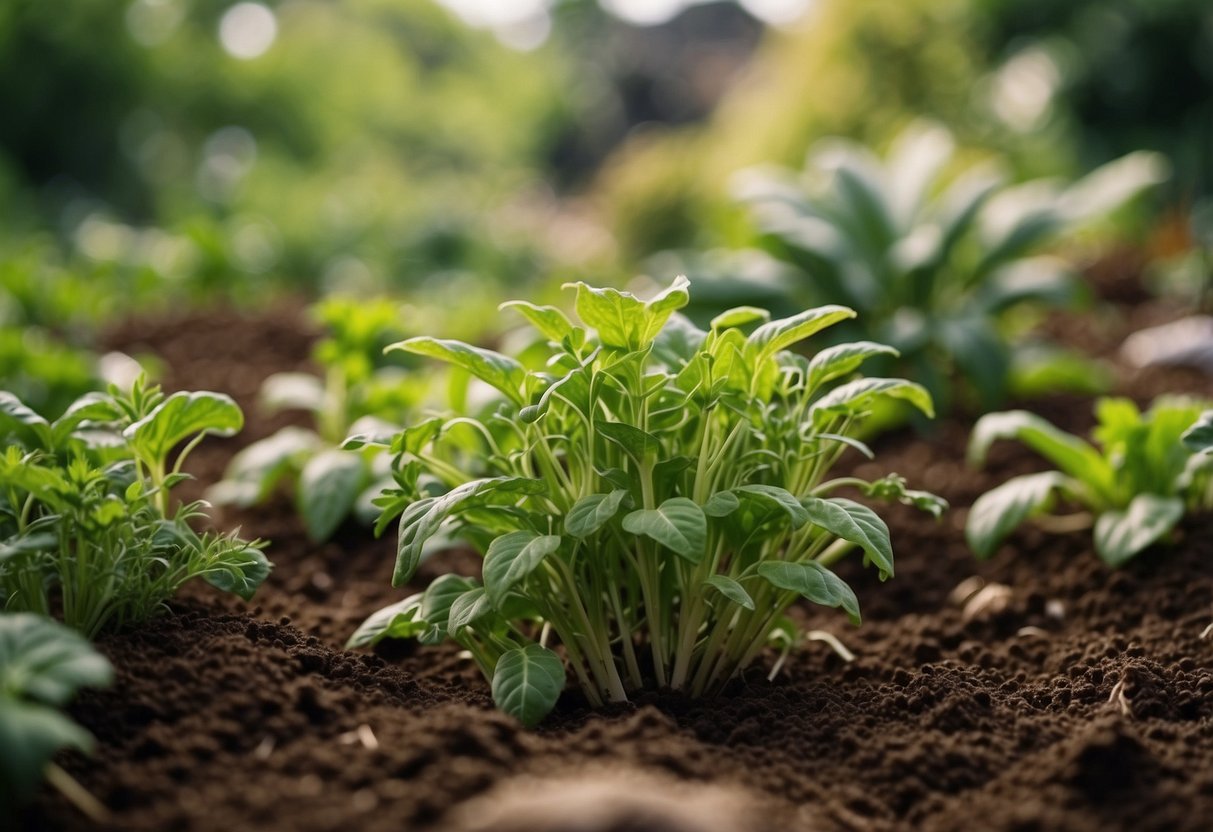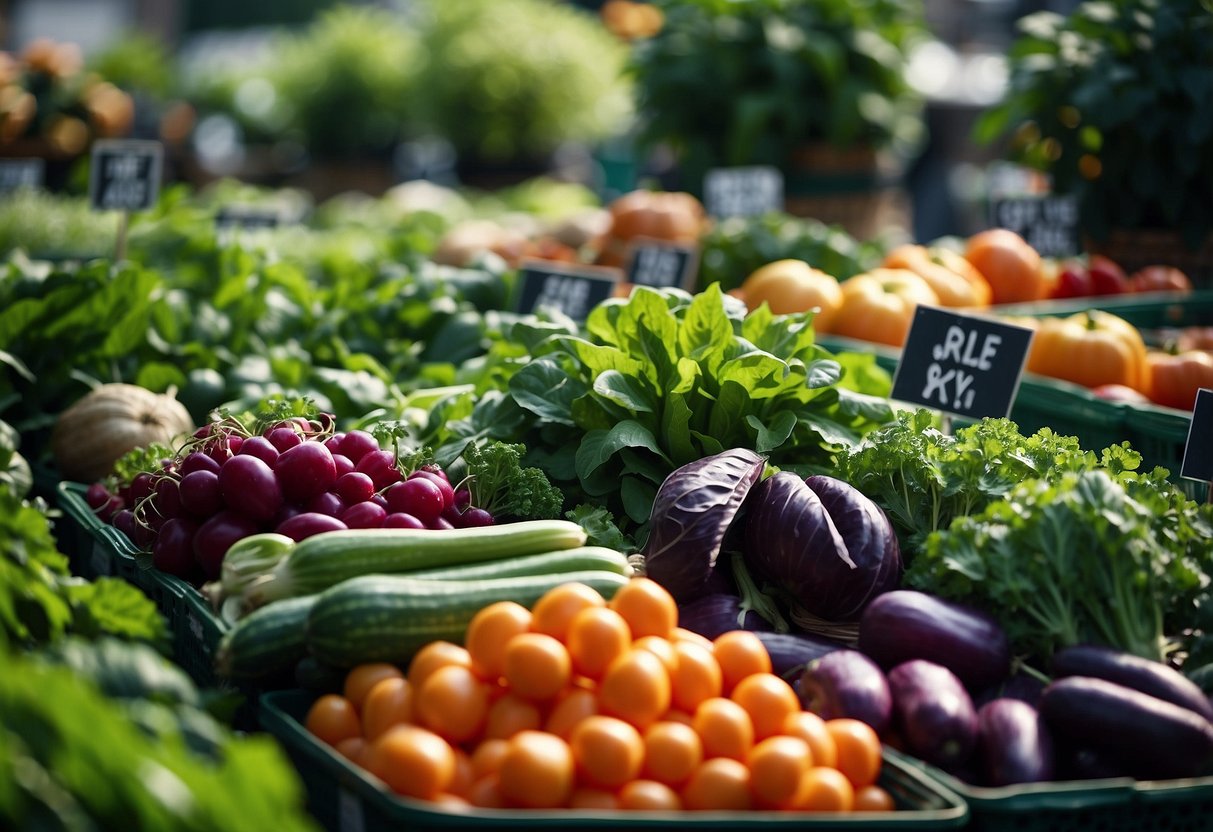Money-Saving Gardening Tips: Efficient Strategies for Growing Vegetables and Herbs
Soil Health and Fertilization Strategies

Maintaining healthy soil and using effective fertilization methods are crucial for a thriving garden. This section explores two key aspects: creating your own compost from food scraps and the benefits of natural fertilizers.
Making Your Own Compost
Creating compost from food scraps and yard waste enriches the soil and boosts plant growth. Composting decomposes organic material into a nutrient-rich mixture beneficial for the garden. Kitchen scraps like vegetable peels, coffee grounds, and eggshells can be used. Yard waste, such as grass clippings and leaves, also contributes to the compost heap. By ensuring a good balance of green and brown materials and regularly turning the pile, one can produce high-quality compost. This not only reduces waste but also enhances soil structure and fertility.
Natural Fertilizers and Their Benefits
Natural fertilizers, such as manure, bone meal, and fish emulsion, provide essential nutrients without chemical additives. Manure enriches soil with nitrogen, phosphorus, and potassium, promoting plant growth. Bone meal offers a phosphorous boost, aiding in root development and flowering. Fish emulsion, high in nitrogen, supports leafy green growth. These organic alternatives improve soil health by enhancing microbial activity and improving moisture retention. By using natural fertilizers, gardeners can maintain sustainable practices that benefit both the plants and the environment.
Utilizing Free Resources and Discounts

Engaging in local seed swaps and attending plant sales can offer significant cost savings for gardeners. Additionally, seeking out free or discounted gardening supplies can drastically reduce the initial investment needed to start or maintain a garden.
Engaging in Seed Swaps and Plant Sales
Seed swaps are community events where gardeners exchange seeds from their own gardens. These swaps promote biodiversity and provide access to a variety of seeds that might not be available commercially. Participants can often find unique heirloom varieties and share growing tips with other gardeners.
Local plant sales, often held by gardening clubs or community organizations, are another great way to obtain affordable plants. These sales might feature native species and plants suited for the local climate, increasing the chances of successful growth. Many vendors at plant sales are knowledgeable and can offer valuable advice on plant care. Gardeners can save money and foster a sense of community by taking part in these events.
Finding Free or Discounted Gardening Supplies
Many communities offer resources for acquiring gardening supplies at little to no cost. For instance, municipalities might provide free compost or mulch made from local yard waste. Checking with local waste management or parks departments can reveal these opportunities.
Online platforms, such as community groups on social media, can also be fruitful places to find free or discounted tools and materials. Retiring gardeners or those moving away often give away supplies they no longer need. Additionally, some businesses offer discounts on slightly damaged or blemished items that are still functional. By seeking out these resources, gardeners can significantly cut costs and keep their projects more sustainable.
Watering and Irrigation Tips
When growing vegetables and herbs, water conservation and cost-effective irrigation are essential. Learning how to utilize rainwater and budget-friendly irrigation methods can save money and support sustainable gardening practices.
Conserving Water with Rainwater Collection
Rainwater collection is an effective way to conserve water and reduce household utility bills. Home gardeners can install rain barrels under downspouts to capture runoff from roofs.
Collected rainwater can be stored in containers and used to water plants during dry periods. This method decreases reliance on municipal water supplies and provides a sustainable water source. Ensure barrels are covered to prevent mosquito breeding.
Rainwater is naturally soft and free of chlorine, making it ideal for plants. Using rainwater also promotes responsible water usage and helps reduce the environmental impact of gardening.
Effective Irrigation on a Budget
Effective irrigation doesn’t have to be expensive. Drip irrigation systems are cost-effective and use water efficiently by delivering it directly to the plant roots. Kits are available at garden centers and can be set up without professional help.
Using soaker hoses can also reduce water waste. Laid out along garden rows, these hoses slowly release water directly to the soil. This method reduces evaporation and runoff, ensuring plants receive the moisture they need.
Mulching around plants is another budget-friendly approach. Organic materials like straw or wood chips retain soil moisture and protect roots from extreme temperatures, improving water efficiency.



